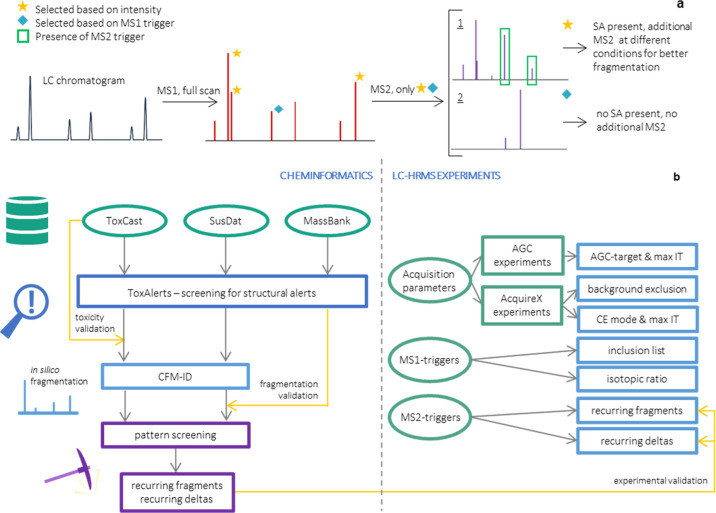Figure 1.
(A) Schematic representation of the proposed LC-HRMS/MS workflow using intelligent acquisition based on structural alerts (SAs). A full MS1 scan is taken after chromatographic separation, and the peaks are screened for their intensity and the presence of MS1-triggers (blue diamond marker). The most intense peaks (based on DDA-approach, yellow star marker) and those that contain a MS1-trigger are selected for a MS2 scan. The MS2 scans are screened for MS2-triggers, indicating the presence of a SA, resulting in two possible scenarios: 1. SA is present, so an additional MS2 scan at different conditions is taken. 2. No SA is present, so structure identification is not necessary, and no additional MS2 is taken. B) Schematic overview of the strategy that was used to develop the intelligent acquisition method, both cheminformatics (left) and LC-HRMS experiments (right) were applied.

